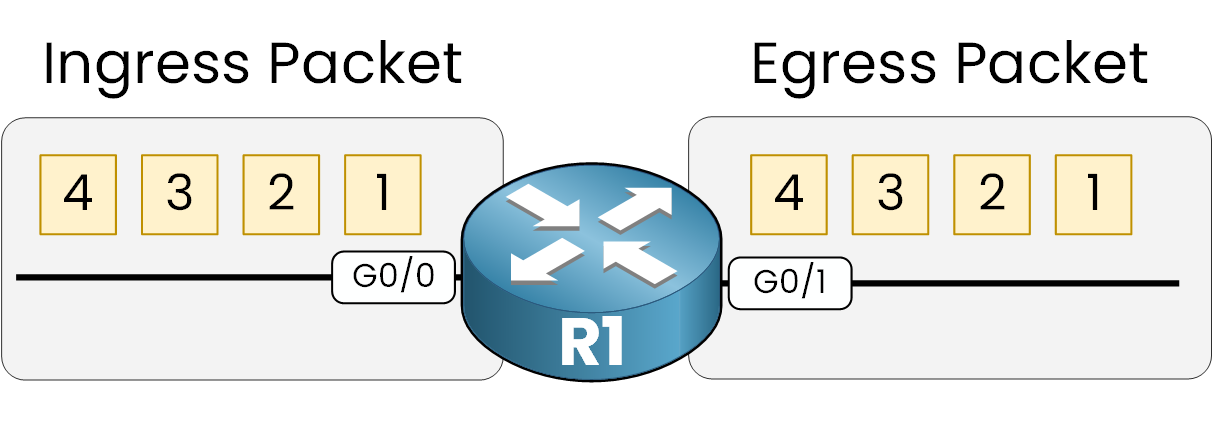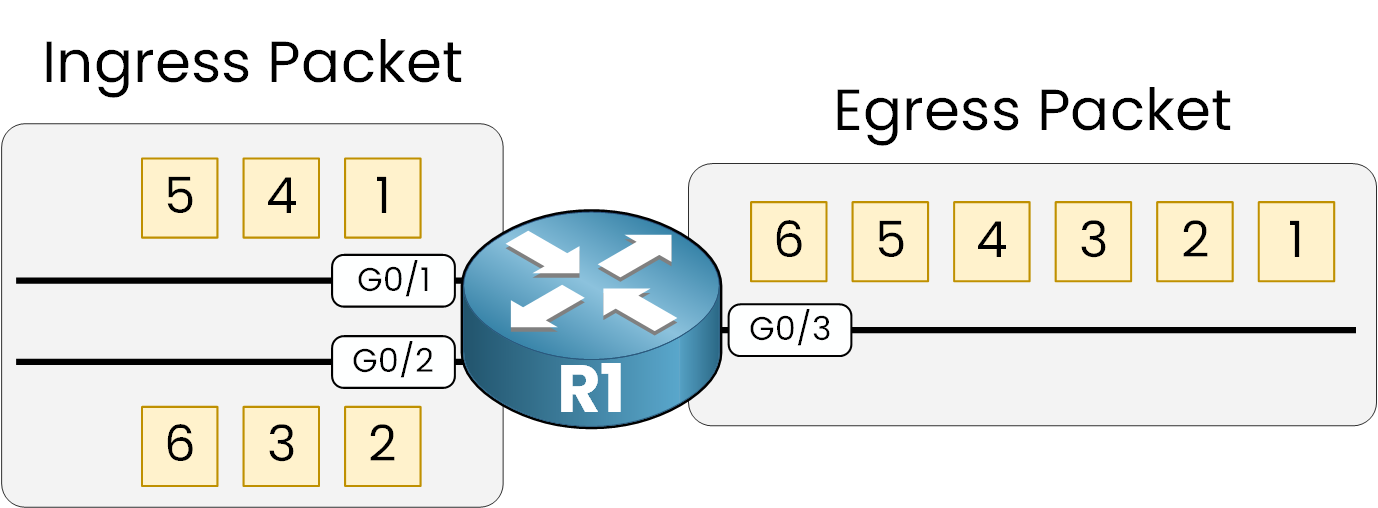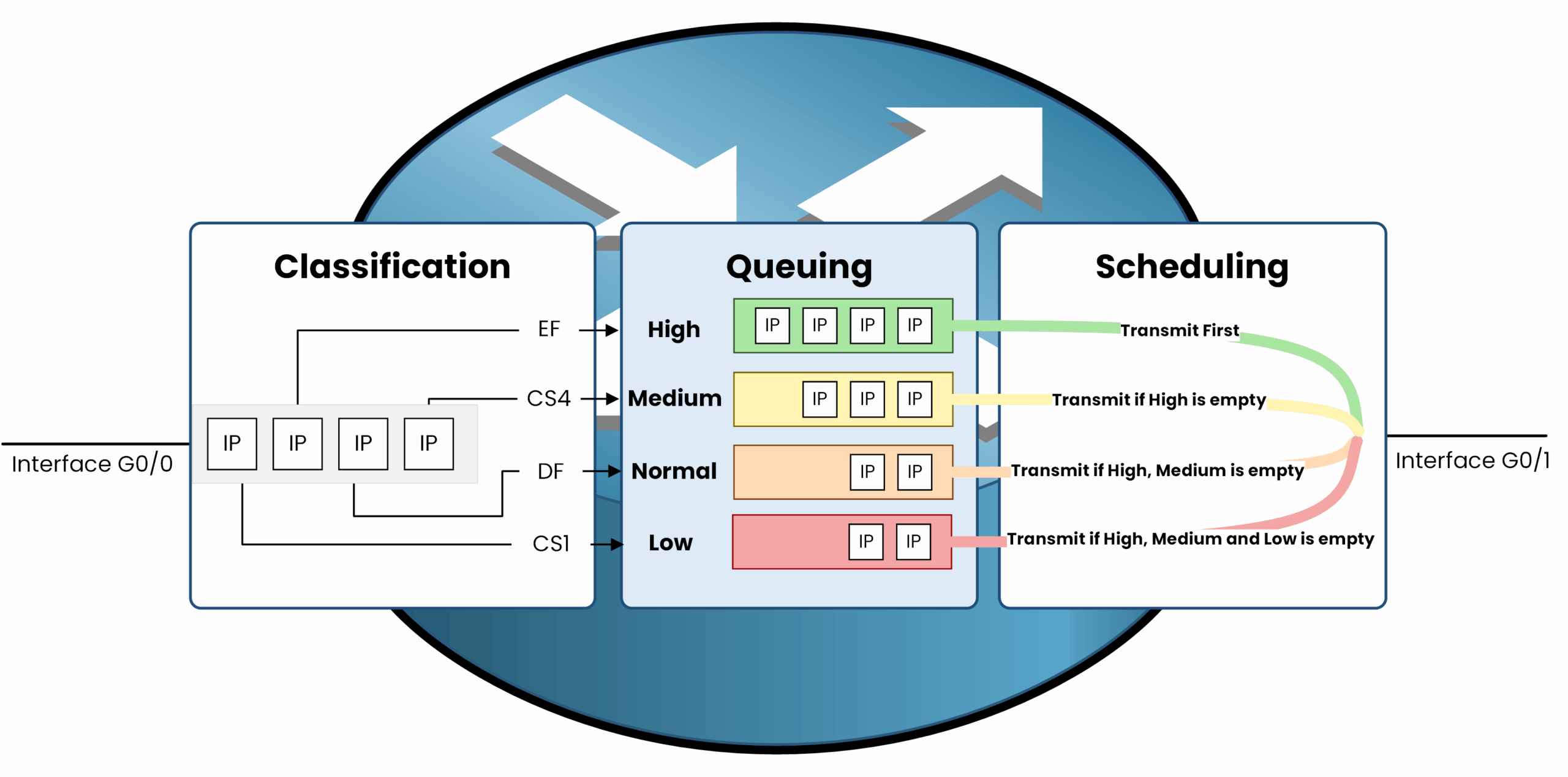When network congestion occurs, the egress interface might not be able to send packets fast enough.
In such cases, the device temporarily stores excess packets in one or more queues until they can be transmitted. This is known as queuing.
Scheduling: In more advanced queuing methods, scheduling determines the order in which packets are sent. It allows prioritization of certain traffic types, which is essential in modern networks.
We’ll now explore the different queuing methods, starting with the simplest: FIFO.Answer the question below
What determines the order in which packets are sent?
FIFO is the default queuing method used by network devices. It transmits packets in the exact order they were received, without prioritization.
How FIFO Works
In the example below, the router receives four packets and transmits them in the same order they arrived. There’s no distinction between types of traffic; every packet is treated equally.

Figure 1 – FIFO (First In, First Out) Queuing Mechanism
What Happens During Congestion?
When congestion occurs, excess packets are stored in a single queue for the egress interface. The scheduler processes these packets one by one in the order they arrived.

Figure 2 – FIFO Queue Behavior During Congestion
Take this example: two interfaces are receiving traffic that needs to be sent through the same egress interface, G0/3.
If G0/3 becomes congested, the device buffers the packets and transmits them later when the interface becomes available.
Limitations of FIFO
⚠️ While FIFO is straightforward and works well in low-traffic networks, it has a major drawback: no prioritization.
Critical traffic, like VoIP or video, is treated the same as less time-sensitive traffic, such as file transfers. This can lead to delays for applications that require low latency.
For more complex networks with diverse traffic needs, advanced queuing methods are necessary to provide prioritization and optimize performance.
Now that we’ve covered FIFO, let’s move on to Priority Queuing (PQ), where traffic can be prioritized based on its importance. This ensures critical packets are transmitted before less urgent ones.
Answer the question below
In FIFO, which packet is sent first?
Priority Queuing (PQ) introduces prioritization by dividing traffic into up to four queues, ranked by priority: High, Medium, Normal, and Low.
Key Components of PQ
At this stage, the queuing system consists of the following elements:
Classifier: Assigns packets to specific queues based on their priority.
Queues: Temporarily hold packets, categorized by priority.
Scheduler: Determines the transmission order, always prioritizing higher-priority queues.

Figure 3 – Priority Queuing (PQ) Process: Classification, Queuing, and Scheduling
How PQ Works
Classification: Packets are evaluated and placed into one of the four queues based on their priority level.
Transmission Order: The scheduler processes higher-priority queues first. For example:
Packets in the High-priority queue are always transmitted before packets in the Medium-priority queue.
Lower-Priority Queues: These queues are only serviced when all higher-priority queues are empty.
This ensures that critical traffic, such as voice or video, is transmitted with minimal delay.
Risks of PQ
While PQ is excellent for prioritizing important traffic, it has a significant limitation:
40 % Complete: you’re making great progress
Unlock the rest of this lesson
If you’d like to continue your CCNA journey, simply create your free account.
Access all CCNA lessons
Practice with hands-on labs
Train with Practice exams and Quizzes
Progress tracking in your dashboard
Made by network engineers - CCNP certified
learners globally